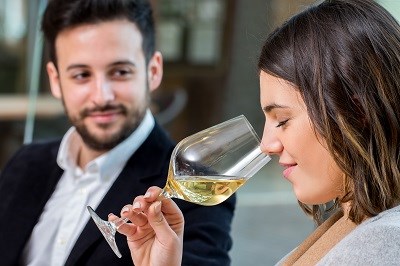So important is the vintage for a wine?
Wine is one of the few beverages that can be affected by what the weather is like each year. But is it really important?

To reassure the reader, a good sommelier will not take it personally if the wine does not seem right. On the contrary, these professionals want to perfectly understand what happens with their wines, so we must be as clear as possible when presenting our case. At any rate, as we know that not all restaurants have wine professionals, we will also give you some advice to prevent the situation from becoming too tense but still achieve your goal.
Many wine lists, particularly in average restaurants, do not mention the vintage of the wines. This is a very common mistake, but it has an easy solution: simply ask for the vintage before ordering. The vintage of each product is an important piece of information, we speak about it in this article. We do not ask of you to know how to value all the vintages, but beyond the legendary and the dismal ones, we must take a good look at the age of the wine. For example, the vast majority of rosés that can be found in the hospitality industry should be consumed in the year period of the latest harvest. That is to say, if we order a rosé wine today, we should consume it from 2020, and not 2019 or lower. Sorry to say, there are exceptions. It can get tricky because there are rosé wines, generally with some kind of ageing (lees or barrels) that can be consumed much older. However, they are the least common, that is why this advice we bring you today can be useful to you. To avoid returning the wine if it is excessively old, we should ask the sommelier or waiter what vintage it is before ordering it. These same criteria can be applied to young white wines, but there are some nuances to point out.
The rules for white wine are similar. To be clear, the cooler areas of Spain are likely to create wines that withstand the passage of time better. In continental and Mediterranean areas, if the wine is not aged in any way, the consumption of young wines should generally be of the latest harvest. Back to 2020. Some examples of wines we should order in this manner are: Rueda, Somontano, Cariñena, Valencia, etc... On the other side, with whites with usually more ageing potential we have Rías Baixas, the txakolí producers, Valdeorras, Ribeiro...

Regarding red wines, the rule is very similar, although there are many more exceptions. In young wines without ageing of any kind, the wine to be consumed must generally be of the latest harvest, although there are certain wines that allow us to taste over a longer period of time, such as wines fermented in vats, or some wines produced in cement. The rule of continental or Atlantic wine does not apply here, as it depends very much on the type of producer. The best producers bring forward their harvests with precision and obtain wines with a lot of acidity, which makes their wines last longer.
This is one of the most common situations, finding wines with the 2012 Crianza category for example. Should I drink it? There is no mathematical rule for these wines, but due to their permanence in barrel and bottle we speak of between 3 and 6 years. In the more powerful areas, with more structured wines, the acceptable time frame should be longer, for instance in Ribera del Duero we would recommend drinking a Crianza up to 5 or 6 years, while in Rioja we would try to drink it earlier, up to a maximum of 4 years. This is a general guideline, as the winemaker is also important here. We will not go into Reserva and Gran Reserva wines, as here the time spectrum is so wide that it depends entirely on the producer and the area where the wine is made.
A corked wine is one of the most common flaws we find. Nowadays it is more complicated to find them but not impossible. The cork makes the whole wine smell and taste of cork, sometimes in a wild way and others in a subtle way. It is a flaw that will never go away from the wine. When the wine smells corked often the cork that sealed it smells too, so it is wise to smell the cork when a bottle is uncorked.
We cap off with oxidised wine, which is the consequence of badly preserved or poorly aged wine. Generally, these wines come with a brownish colour that shows that things are not going well at all. In the mouth, we will notice it tastes old, even if it is from a young vintage. This flaw is difficult to explain, but it should prompt us to talk to the sommelier or person in charge to see if he/she can replace it.
Wine is one of the few beverages that can be affected by what the weather is like each year. But is it really important?
Who hasn't wondered at some point if they should use a decanter with a wine?
At Peñín we are already focusing on the 2025 Guide, which begins its tasting tour this January to reach October with the most complete Guide to Spanish wines in the world.